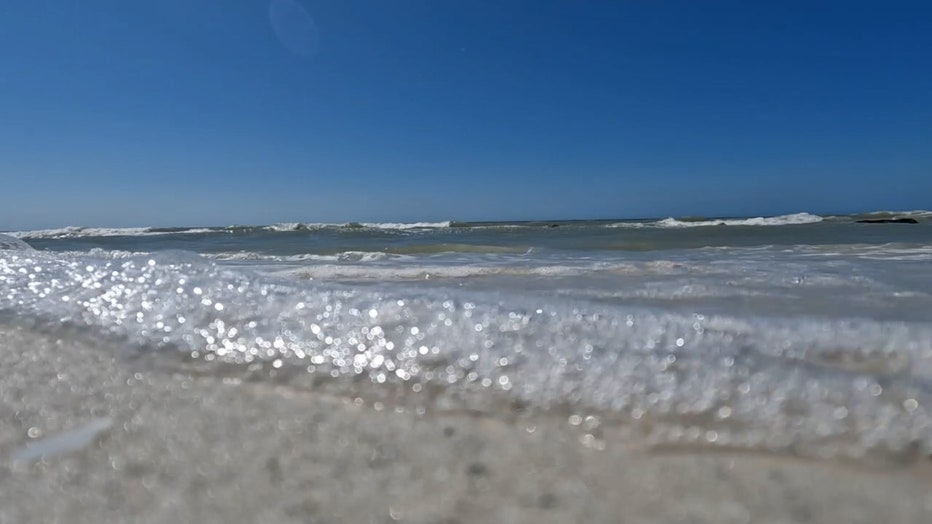Have beach plans? Pinellas, Sarasota coast experiencing high levels of red tide
Beachgoers feel the sting of red tide along Pinellas County
Red tide has returned to parts of Pinellas County and it only gets worse, the farther south you go.
ST. PETE BEACH, Fla. - If you’re heading to the beach in the next couple of days, you may want to reconsider which beach you go to. NOAA is forecasting a high risk of respiratory irritation from red tide at some beaches in Pinellas, Sarasota and Lee Counties over the next 36 hours.
The FWC and NOAA said the risk for respiratory irritation could change simply depending on the time of day because of the winds.
"The irritation is caused by the toxin that the red tide produces," said Dr. Rick Stumpf, an oceanographer with NOAA. "It becomes an aerosol and breaks up in the waves, gets into the air when we have onshore winds. Over the next 36 hours, there are, not all beaches, but there is a number of beaches where there's enough of the red tide just along the shore that the toxin will be noticeable," he said.
Samples taken by Pinellas County officials Tuesday show high levels of red tide at Pass-a-Grille, and medium concentrations at Madeira Beach and Treasure Island.

Anton Flesher, visiting Pass-a-Grille from Kentucky, said he won’t let it ruin his vacation.
"It just seems like it’s a cycle that is part of Mother Nature that comes and goes, and it’s just something you’ve got to accept," he said. "When you drive as far as we do coming from Kentucky, you’ll get down to the beach one way or another."
According to FWC research scientist Kate Hubbard, the current bloom affecting parts of Pinellas, Sarasota and Lee Counties is the same one that affected the area in December.
"We have been watching this bloom move north and south this year quite a bit," she said.
Scientists use clay to stop effects of red tide
Two years after scientists first field tested a clay mixture to mitigate red tide, they are looking back on what they learned in Sarasota County and preparing for a new field test.
RELATED: Scientists prepare for second field test of clay mixture used to mitigate red tide
It can cause you to cough and your eyes to water, and doctors say people with asthma or respiratory conditions should avoid the beach.
Stumpf said the red tide algae thrives in the warm waters of the Gulf. How long it sticks around, though, depends on many different factors.
"We're in the dry season, so the nutrient supply is relatively low and so hopefully it will either be blown out by the winds, or it will exhaust one of the nutrients, or they do get diseases also," he said. "You don't think of that, but there are actually various viruses and other things that do in fact them. And if they're in dense concentrations, that's another risk."
"I'd like to say," he added, "we can predict when any of those will happen. We're trying to figure out how some of these work, but we don't have an answer right now. I can't tell you now if it'll be gone in a few weeks or if it might last for longer."
READ: Invasive 'Jesus Christ Lizard' could be harmful to people, Florida's environment
He said NOAA checks the forecast throughout the day to see which way the winds are blowing. Depending on the direction, wind is what brings red tide to shore and what pushes it away.
He said those forecasts become more uncertain, though, after 36 hours. Therefore, it’s a waiting game as far as how long red tide will last and what makes it disperse.
NOAA’s respiratory risk forecast is updated several times a day and shows you the risk from red tide for specific beaches in the area. Pinellas County and the FWC also update their red tide maps frequently.
You can see NOAA's maps here: https://coastalscience.noaa.gov/science-areas/stressor-impacts-mitigation/hab-forecasts/gulf-of-mexico.
FWC's red tide status is here: https://myfwc.com/research/redtide/statewide/.

